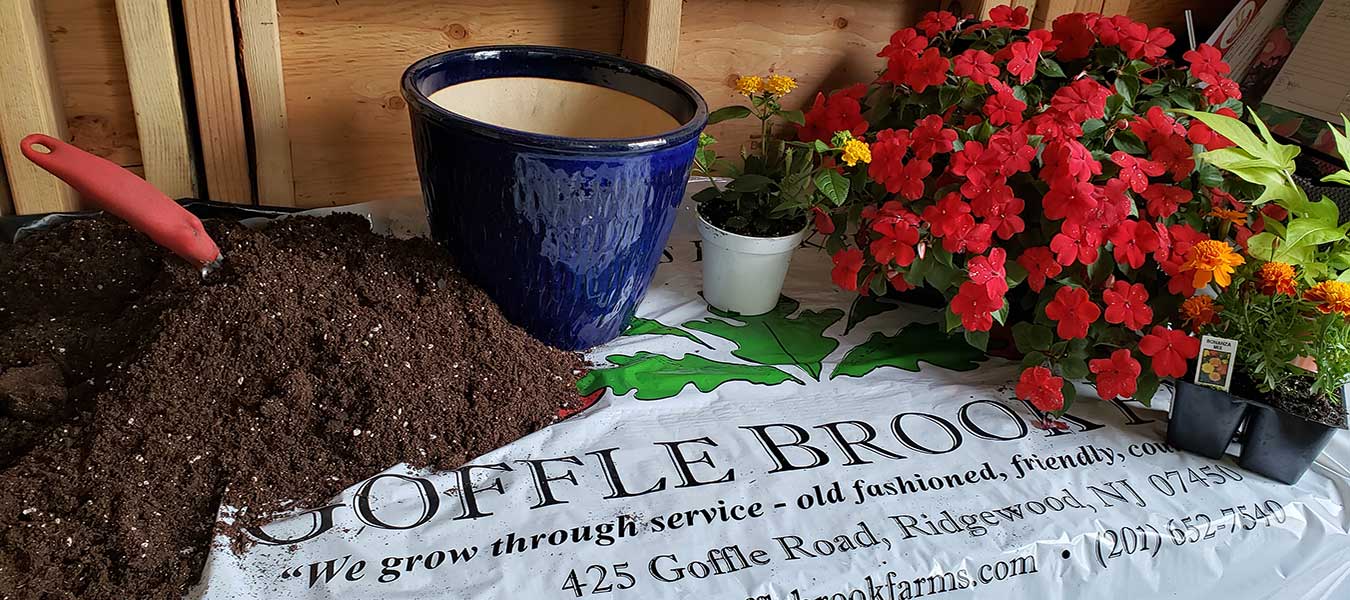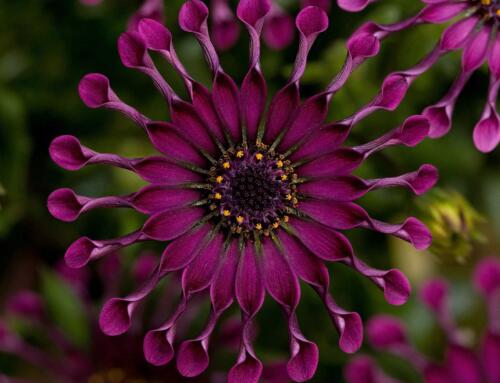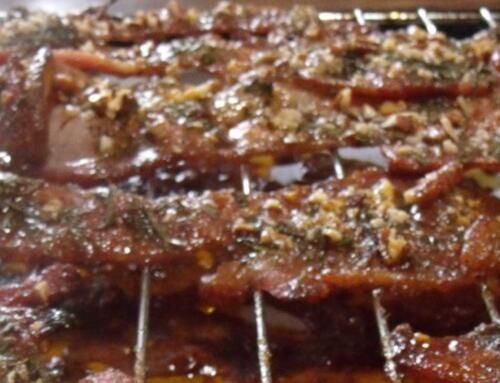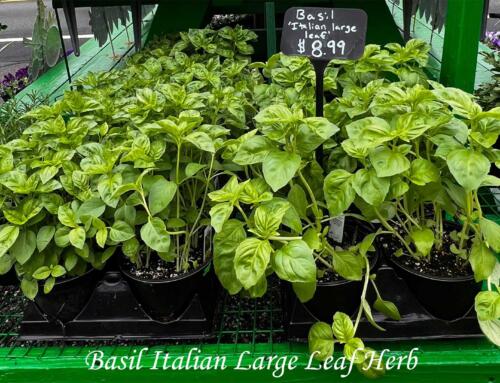Rosemary | Salvia rosmarinus

Perennial Herbs at Goffle Brook Farms
The rosemary plant (Salvia rosmarinus) is a fragrant herb that grows as a perennial, rounded, evergreen shrub. Its growth habit features slender, needle-like, grayish-green leaves on upright erect woody stem which put forth clusters of small, blue, lavender, or white flowers that appear in late spring thru early summer, though it occasionally can bloom at other times of the year as well. The blossoms are two-lipped and whorled around the square stems. Rosemary can be planted in the spring after any threat of frost has passed. It is an excellent plant for containers and its aromatic essence wafts upon the breeze when placed upon the patio. It is frequently cultivated as an ornamental, for use in sachets or potpourris, and is valued as an enhancement to any recipe within all cuisines.

Salvia rosmarinus
Common Name | Rosemary
Botanical Name | Salvia rosmarinus
Family | Lamiaceae
Plant Type | Herb, perennial
Size 2–6 ft. tall, 2–4 ft. wide
Sun Exposure | Full sun
Soil Type | Sandy, loamy, well-drained
Soil pH | Acidic, neutral
Bloom Time | Spring, summer
Hardiness | Zones 8–10
“I plant rosemary all over the garden, so pleasant is it to know that at every few steps one may draw the kindly branchlets through one’s hand, and have the enjoyment of their incomparable incense; and I grow it against walls, so that the sun may draw out its inexhaustible sweetness to greet me as I pass.”
In cooking, rosemary is used as a seasoning in a variety of dishes, such as soups, casseroles, salads, and stews. Use rosemary with chicken and other poultry, game, lamb, pork, steaks, and fish, especially oily fish. It also goes well with grains, mushrooms, onions, peas, potatoes, and spinach.
Use fresh rosemary sprigs or leaves in cooking as you like. Or hang the stems upside-down in a dry, cool, well-ventilated area for drying, which should take a couple of weeks. Once the stems are dry, strip off the leaves and keep them in an airtight container in a pantry.

Rosemary Plant Care
Light
Rosemary likes full sun and does not tolerate shade, requiring at least six hours of direct sunlight on most days. Inadequate light can cause leggy and weak growth, so provide them with a spot in the garden with full to part sun.
Soil
A well-draining sandy or loamy soil is best for rosemary as it doesn’t grow well in heavy clay and damp, wet soils. A slightly acidic to neutral soil pH is ideal (6.0 to 7.0). We recommend utilizing and planting rosemary in potting soil, a type of soil mixture of peat, loam, sand, and nutrients that help vegetables, herbs, fruit, and plants grow to their maximum potential. Our Miracle Gro Potting Soil is an ideal and excellent growing medium for all your herbs.
Water
Rosemary is quite drought-tolerant once the plant it is established, and it’s better to water sparingly rather than overwater them. Allow the top few inches of soil to dry out between waterings, and then water so that the soil is evenly moist but not saturated.
Fertilizer
Rosemary is not a heavy feeder. By mixing compost into the soil at the time of planting you can help to give the shrub a healthy start. Once established give them a boost with a dose of our fox farm liquid fertilizer, following the label instructions, to promote quality growth.
Pollination
Rosemary shrubs self-pollinate and attract bees and other pollinators to the garden. Rosemary is a self polllinating plant that performs double duty – feeding both bees and people, thereby making it an easy, beautiful, and delicious addition to any garden. Rosemary also provides an important early nectar source for emerging spring bees, like bumbles and masons.
Harvesting Rosemary
Rosemary can be harvested at almost any time of year, though spring and summer are when it grows most actively. And the leaves are most flavorful and aromatic just before the plant blooms. To harvest, use pruners to cut off 4- to 6-inch stem tips. Harvest no more than 25% of your plant at one time, thus allowing the herb to keep its attractive shape. Harvest the fresh flower blossoms to use as a garnish on salads and desserts.
In cooking, rosemary is used as a seasoning in a variety of dishes, such as soups, casseroles, salads, and stews. Use rosemary with chicken and other poultry, game, lamb, pork, steaks, and fish, especially oily fish.

Goffle Brook Farms






